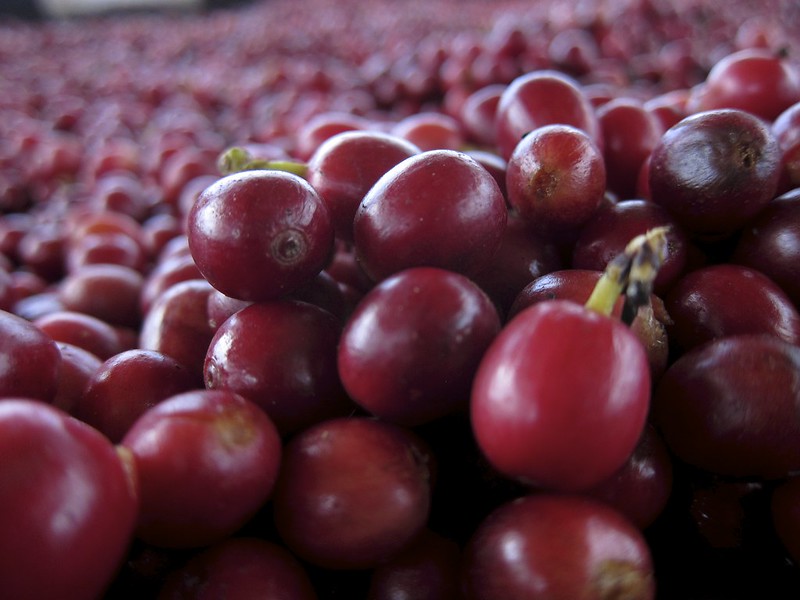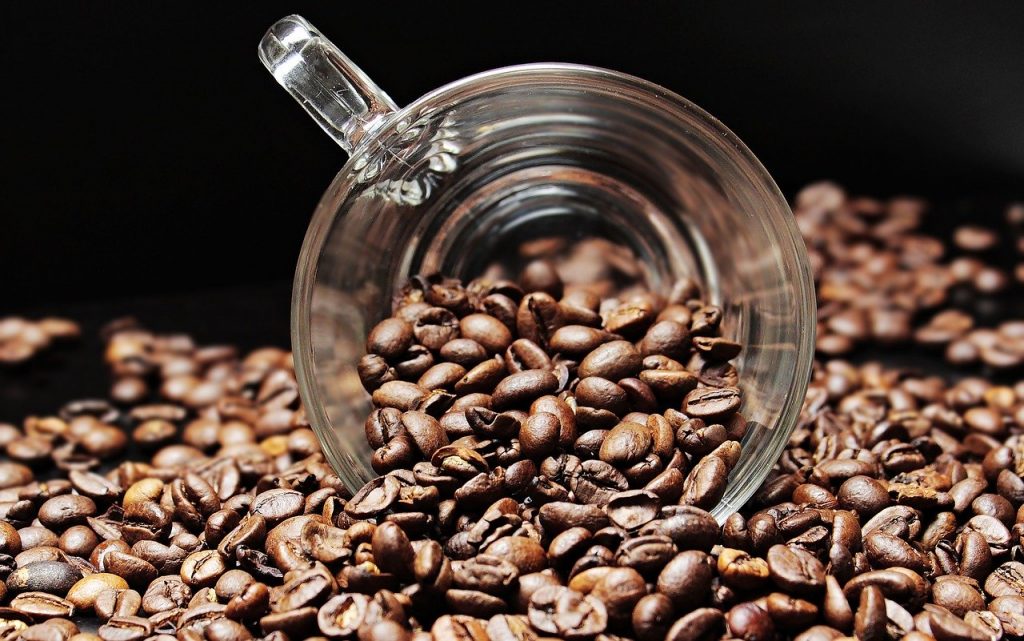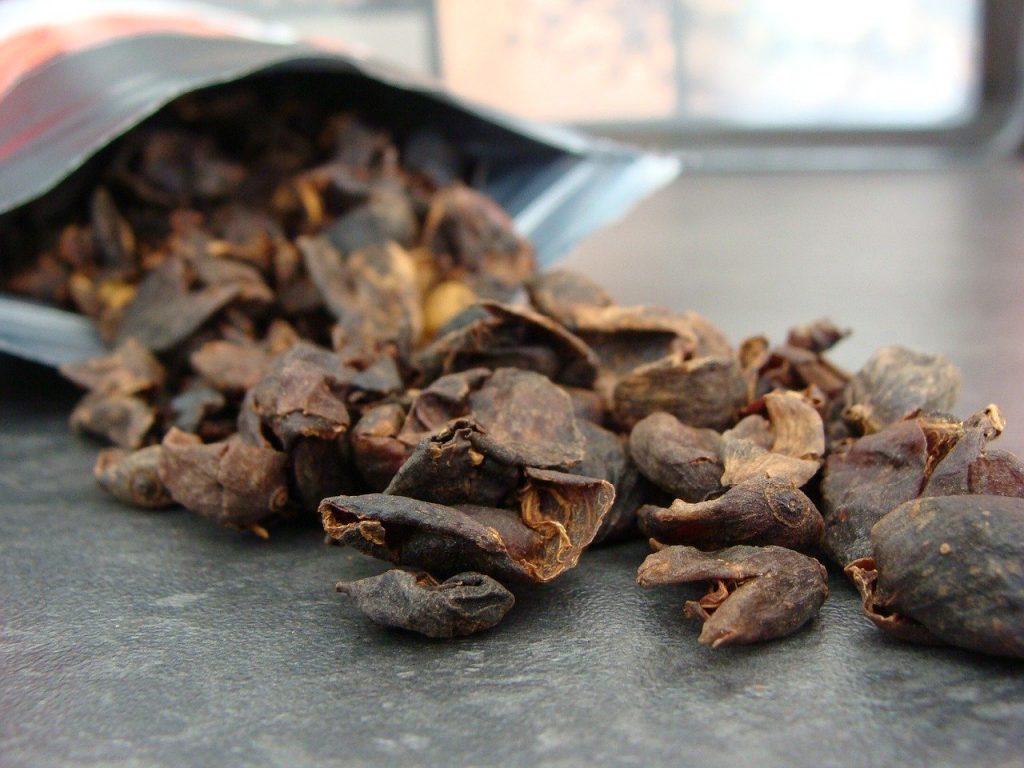What is a Coffee Cherry? – Become More Coffee Savvy

The first thought that comes to mind might be that of a regular cherry infused with the dark, bitter, and bold coffee flavor.
Or is this some kind of GMO (genetically modified organism) experiment, gone horribly wrong, or right, depending on how you feel about cherries and coffee?
In all actuality, there is nothing unnatural or modified. The coffee beans that we use to make all our caffeinated beverages came from a cherry tree. Those same beans are the seeds inside the coffee fruit that grows from that plant.
This only makes sense as many of the things we use start from seeds in the soils. We eventually receive the finished product in our grocery store without knowing much about the process.
As the cherry tree grows and matures, it starts to bear fruit in the form of a cherry. The cherry is ready to harvest once they have ripened. You can tell when the fruit is ready to pick, as the color of the cherry changes from green to red.
After the cherries are harvested then the skin and pulp are removed leaving just the seed. The seeds are then roasted and the end result is what we know as the coffee bean.
We can buy whole coffee beans, ground coffee, and even instant coffee crystals.
Now you may be wondering,
“but what about the actual fruit? The cherry?”
Are coffee cherries edible?
In modern society, we are used to the sweet taste of the cherries, and the fruit that we find in our local grocery stores.
But in all reality, much of today’s fruits do not resemble what they once were many years ago. That’s because we have modified, hybridized, and refined the foods to fit our diet and taste.
Take the banana for example. Several thousand years ago, the banana had many seeds that making the fruit a hassle to eat. They were more than likely ignored by our ancestors and not a part of their diet.
As for the coffee cherry and why it never gained popularity, like that of the raspberry or dark red cherries is simple. There is a lack of nutritional value.
Biting into one you will find that the cherry fruit anatomy consists mostly of skin and seeds. The pulp is attached to the seeds and best compares to the slimy pulp left on a peach stone. The skin of the cherry is very rough.
If you pick a perfectly ripe coffee cherry, then there will be a delightful flavor. While it was not like a ripe mango or the traditional cherry that we find in the local grocery store, it was pleasant. The best comparison would be a watermelon combined with an apricot.
Unfortunately for all the flavor, there is simply not enough flesh to enjoy the fruit as a whole. This is the main problem with consuming coffee cherries. Nonetheless, they are still fine for human consumption.
They are a part of some animals’ diets. The story of how coffee was discovered says that an Ethiopian herder by the name of Kaldi, took notice of his goats increase in energy after consuming the cherries.
Caffeine Caffeine Caffeine

So why did we decide to add coffee cherry trees to our list of domesticated agriculture?
The energy-boosting effects of the caffeine of course!
While there is not a whole lot of flesh to consume, the seeds contain plenty of what billions of people crave every morning to get the day started. After removing the pulp from the seeds they are still not ready for use. They are so dense that the grinder would have difficulty breaking them down.
This is where the process of roasting comes into play. Once the seeds are roasted they become brittle and are easier to manage and grind to make coffee.
The roasting process is the main factor contributing to the flavor of the coffee. This was not the intention as roasting was a necessity to make the beans easier to handle and process for consumption for the first coffee roasters.
Your cup of coffee has a distinct taste that is associated with the agricultural conditions in which the plant grew. But when it comes to the flavor of the coffee cherry fruit and the by-product coffee, there is nothing in common. It would be like comparing a cooked chicken wing to an uncooked one.
What is Cascara?

If you are still curious about the flavor of the coffee cherry, another option is trying cascara. After the seeds are de-pulped the farmers dry the remaining skin with care. The end result is called cascara or a cherry coffee tea that has been popular with coffee farmers.
The taste is similar to tea, in that it is sweet and refreshing. It still has the distinct flavor of the coffee cherry. Also, cascara is on par with black tea for having the same amount of caffeine.
Some people consume the dried cherry skin as if it were a raisin. This is not suggested unless it is from a very reliable source. Cascara has been known to grow mycotoxins and mold. Other sources claim that it can provide antioxidant health benefits, but that has been debatable.
Even though the European Union has banned the sale of cascara until more studies are done, some still indulge.
If you still want to see what the hype is about I suggest getting a ticket and going straight to the source. Take a trip to a farm and either try the cascara in its dried form or as a drink.
Heck! While you are there you should also try eating a coffee cherry, ripened and picked straight from the tree.
For any coffee lover, this will be a worthwhile experience!
Can you eat coffee cherries raw?
The answer is yes!
You can eat them as a fruit. I would not advise consuming too many at one time though.
Can you eat coffee grounds for caffeine?
Yes!
You can certainly eat coffee grounds to get a boost of caffeine. I have tried this a few times while in school to get that instant kick of energy. It is a faster way to get caffeine to the system, but it definitely does not beat the taste of a cup of brewed coffee.
Find out more about eating coffee and the benefits!
Can you chew on the coffee beans?
Yes indeed!
You can chew the coffee beans, but you should be careful, especially depending on the roast. If it is a light roast then the bean will be very dense. If the coffee bean is unroasted then it will be hard, so be extra careful not to hurt yourself.
Choose the darker bean for the most brittle, and those should be easier to chew!